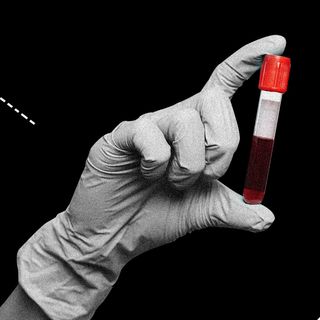Approximately 800 million children and teens around the world have dangerous levels of lead — a neurotoxin that causes intellectual impairment — in their blood, a new report by the Institute for Health Metrics and Evaluation and UNICEF, found.
“This is an absolutely shocking figure,” Nicholas Rees, a policy specialist at UNICEF and author of the report, told The Guardian. “We have known for so long about the toxic [nature of lead], but we have not known how widespread it is, and how many children are affected.”
The vast majority of this affected population resides in developing countries such as India, Bangladesh, North, and sub-Saharan Africa. The young population in these countries is ingesting lead from a variety of sources — the recycling of lead-acid batteries commonly used as a power source in cars and trucks, that releases toxic fumes and contaminates food and water sources. Eating food that is lead-contaminated, because of spices that are often infused with lead to give them a vibrant color, or in pots that are lead-glazed, also adds to the problem. Living in homes that have peeling lead-based paint, or that receive lead-infused water from old pipes, are also other common causes of lead-based contamination. In India, especially, cosmetics such as talcum powders, kajals, hair colors, and sindoor also have high levels of lead.
Related on The Swaddle:
What’s In Your Lipstick?
No level of lead is actually safe for children, according to the World Health Organization, with even low levels causing a drop in IQ scores in children. But the report’s findings signal high lead levels in children’s blood — 5 micrograms/decilitre or more — which are enough to cause long-term damage. These levels are associated with decreased intelligence in children, learning problems, and behavioral difficulties such as mood disorders.
“Lead wreaks its havoc silently and insidiously,” the report states, why is why “it often goes unrecognized.” The damage lead contamination causes — to nervous systems, heart, lungs, and kidneys — is irreversible, it adds. Children under the age of 5 are particularly vulnerable to neurological and physical damage, even death, from lead poisoning. “If lead is available, the body confuses it with more essential elements like calcium and begins using lead to make bones, muscles, brain connections. Since children below six are growing rapidly, lead affects them the most,” Dr. Subhojit Dey, Associate Professor, Indian Institute of Public Health, writes in The Economic Times. He adds, “Malnourishment and lack of iron or anemia increases lead toxicity further affecting pregnant women and children.”
In India, despite the gradual phase-out of leaded petrol (historically the biggest source of lead contamination), the lead levels in blood in the population remain elevated, a 2018 meta-analysis found. This is partly due to how India recycles lead-based batteries, which Dr. Dey writes “happens in unregulated, informal sectors using improper methods of smelting with scant knowledge nor regard for health, safety precautions.” The regulation on other lead-based products, especially those marketed to children, such as toys, is also not strict or standardized, he writes.
In order to tackle this problem, the report suggests: Public education about the dangers of lead poisoning, and just how ubiquitous it can be, needs to be an urgent goal for governments worldwide, followed up with proper testing, reporting and treatment systems, and finally, legislation that curbs the production of lead-based products and improves recycling processes.




